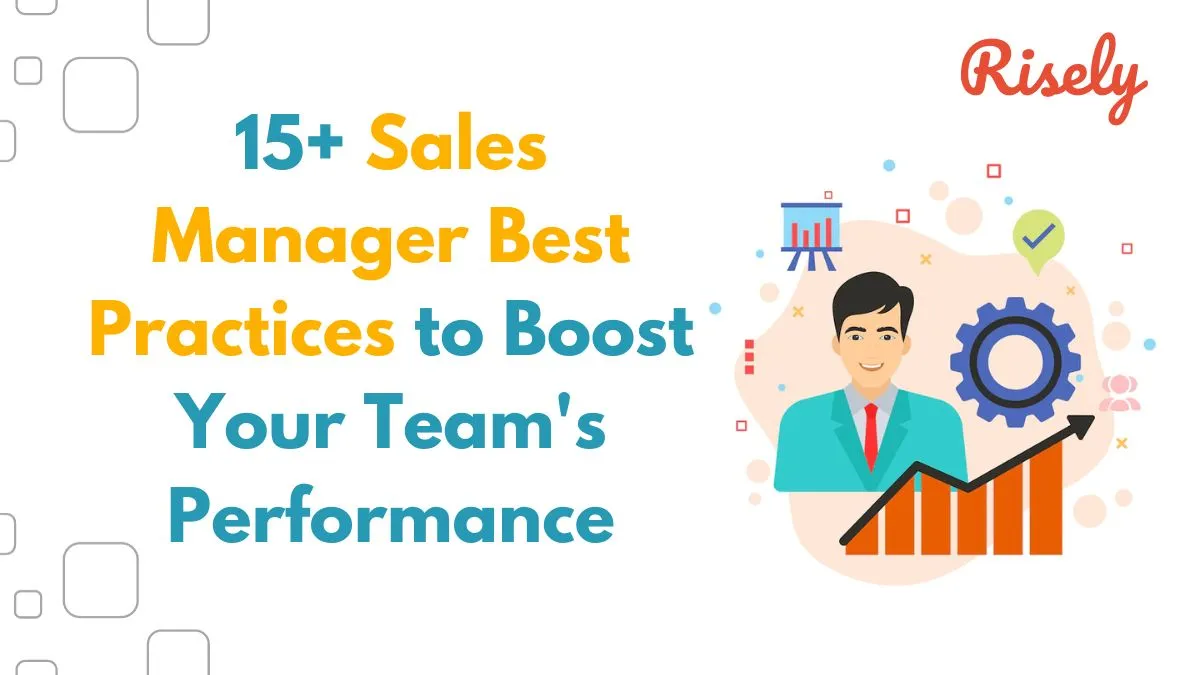How To Make Cross functional Collaboration Work
For the managers and teams of today, collaboration is a hot topic. Beyond collaborating well within the team, we move on to cross functional collaboration. While the idea sounds exciting, there’s also a good chance of getting stuck in loops. So, how do effective managers make cross functional teams work? Let’s figure out. In this blog, we delve into the concept of cross-functional collaboration for learning and its profound impact on the workplace. We explore the advantages and challenges of collaboration across functional boundaries, share real-life examples of successful collaborations, and provide insights into training and leadership practices that drive effective cross-functional teamwork.What is Cross Functional Collaboration?
Cross-functional collaboration refers to a work environment where individuals from different functional areas or departments work towards a common goal or project. In a cross-functional collaboration, team members bring diverse skills, expertise, and perspectives to the table, breaking down silos and promoting the exchange of ideas and knowledge. The primary objective of cross-functional collaboration is to leverage the strengths of individuals with different backgrounds and areas of expertise to achieve a collective goal more effectively than possible within individual departments. This collaborative approach encourages a holistic view of projects as team members collaborate across organizational boundaries to solve problems and make decisions.Examples of Cross Functional Collaboration at Work
New Product Development
When a company develops a new product, cross-functional collaboration brings together individuals from various departments, such as engineering, design, marketing, and sales. Each department contributes expertise, insights, and feedback throughout the product development lifecycle, ensuring that the product meets customer needs, is technically feasible, and has a compelling marketing strategy.Project Management
In project management, cross-functional collaboration is crucial for coordinating tasks and achieving project goals. Project teams typically include members from different functional areas, such as finance, operations, marketing, and IT. Working together ensures effective resource allocation, streamlining processes, and maintaining open communication, leading to successful project delivery.Process Improvement
Cross functional collaboration is key when organizations aim to improve operational efficiency or optimize processes. Organizations can gather diverse perspectives on existing processes by involving individuals from different departments, identifying bottlenecks, and brainstorming innovative solutions. This collaborative approach helps streamline workflows, reduce redundancies, and enhance productivity.Strategic Planning
Cross functional collaboration is vital in strategic planning, particularly when setting organizational goals and devising strategies to achieve them. In this scenario, leaders from different functional areas, such as finance, marketing, and human resources, collaborate to align their departmental objectives with the organization’s strategic vision. These leaders leverage their unique insights to ensure a well-rounded and comprehensive strategic plan.Customer Experience Enhancement
Improving the customer experience often requires cross-functional collaboration. Teams from different areas, including customer service, marketing, product development, and operations, collaborate to understand customer needs and preferences, identify pain points, and implement solutions that enhance the customer journey. This collaborative effort leads to improved customer satisfaction and loyalty.Cross functional Team Management
Given that cross functional teams bring in people from different teams, the role of leaders and managers becomes all the more important. Their involvement is essential for ensuring that teams from different departments work together effectively toward common goals. Primarily, a manager of a cross functional team would focus on the following:- Setting the vision: Managers need to set the vision and mission of the common team. The vision is critical in ensuring teams with different metrics align well.
- Ensuring efficiency and equity: In the second step, the managers need to collaborate to develop processes and resource allocation methods that suit all. It is important to ensure that the needs and duties of all teams get due consideration here.
- Keeping communication thriving: Moreover, the managers are critical in transparent communication channels and building cohesion among people from different departments. Communication gaps and misinterpretations can often arise; that’s where a good manager comes in.
- Managerial tasks: Alongside, a manager for a cross functional team will take charge of the usual managerial initiatives, including continuous learning and development of the team, performance management and recognition of the team members, and keeping the team robust.
Other Interesting Reads
Cross functional Collaboration Skills for Managers
To excel in managing cross-functional teams and accomplishing the outlined tasks, a manager should possess diverse skills. Here’s a breakdown of the key skills required for you:Collaboration and Relationship Building
Cross functional collaboration starts with collaboration. For managers leading such initiatives, collaboration becomes essential as they have to take over people from different backgrounds and ensure that an inclusive and productive culture thrives. A cross functional team manager must focus on building relationships in your team and promoting a shared purpose. Collaboration’s evil twin, confrontation, also comes in handy as it helps face challenging situations directly and resolve issues.Process Development and Resource Allocation
You must collaborate with team members to develop efficient processes accommodating diverse perspectives. Allocate resources strategically, ensuring equitable distribution based on each department’s needs and contributions, balancing conflicting priorities, and finding solutions that benefit the entire team.Communication and Transparency
The manager must establish and maintain transparent communication channels within the team. In addition to clearly conveying the team’s vision, objectives, and progress to all members, the manager must be adept at setting expectations with the team. Effective communication skills are also needed to ensure that you can overcome conflicts easily and guide the team through tough situations.Adaptability and Flexibility
These are the key mottos to navigate through the challenges of working with diverse teams and adapting management styles accordingly. Embrace change and be flexible in adjusting strategies to meet evolving team dynamics and project requirements.Empathy and Cultural Competence
As a manager, you need to master empathy and cultural competence to understand and empathize with team members’ diverse backgrounds and perspectives. It is also crucial that all the parts of your team feel included and secure, which you can do by demonstrating cultural competence to bridge gaps and create an inclusive work environment.Strategic Thinking
Managers working with cross functional teams need to think strategically to align the team’s efforts with broader organizational goals. Strategic thinking also helps anticipate future challenges and develop proactive strategies to address them.What are the Benefits of Cross functional Collaboration?
- When individuals from different functional areas come together, they bring diverse perspectives and expertise. This diversity of knowledge and experience fuels innovation and creativity within the team.
- Cross-functional collaboration encourages the exchange of ideas, allows for exploring different approaches and solutions, and promotes out-of-the-box thinking. By leveraging the collective creativity of team members, organizations can generate innovative ideas and develop groundbreaking solutions to complex problems.
- Cross functional collaboration enables teams to approach problem-solving from multiple angles. Each team member brings their unique expertise and skills, allowing for a comprehensive analysis of problems and developing well-rounded solutions. Cross-functional teams can identify blind spots, uncover hidden opportunities, and tackle challenges holistically.
- In a cross functional collaboration setting, communication becomes vital to the team’s success. Team members must communicate and share information across functional boundaries, fostering a culture of open communication and knowledge sharing.
- Knowledge-sharing enhances the team’s collective capabilities and boosts individual growth and interaction.
What are the Challenges of Cross Functional Collaboration?
While cross-functional collaboration offers a great way to examine things with new perspectives, a few challenges often crop up in such setups. Let’s look at these challenges of cross functional collaboration and try to deduce some tips for managers to improve cross functional collaboration.Potential Conflicts and Power Struggles
When individuals from different functional areas collaborate, opinions, interests, and priorities can clash. Varying perspectives and departmental goals may lead to conflicts within the team as team members advocate for their respective areas of expertise or push for their agendas. Power struggles may arise as individuals vie for influence or control over decision-making processes. What can a manager do to improve cross functional collaboration here?- Build clear lines of authority with defined roles and responsibilities. It will help you ensure accountability for deliverables, too.
- Decision-making may become slow or challenging when multiple stakeholders with diverse perspectives are involved. Again, delegate decision-making responsibility and keep people accountable.
- Trust may be lacking among team members unfamiliar with each other’s work styles or capabilities. Take up some team-building initiatives regularly instead of focusing on tasks solely.
Communication Barriers and Coordination Issues
Effective communication is crucial in cross-functional collaboration, but it can be hindered by differences in language, jargon, and communication styles across functional areas. Misunderstandings and misinterpretations may occur, leading to inefficiencies and delays in project execution. Coordination issues may also arise when team members have different work rhythms, deadlines, or reporting structures. What can a manager do to improve cross functional collaboration here?- Different departments may use jargon or terminology specific to their field, leading to misunderstandings. Set up common communication channels and encourage the use of simple language and openness to questions.
- Varied organizational cultures, work norms, and expectations can lead to misunderstandings or clashes. Building a cohesive team culture that embraces diversity requires intentional effort that you will need to take up.
- Coordination and collaboration become more complex when team members are geographically dispersed. Look for work modes that allow flexibility, such as focusing on asynchronous communication to beat issues with real-time engagement.
Time and Resource Management Challenges
Cross functional collaboration often involves coordinating the efforts of individuals with different schedules, priorities, and workloads. Balancing competing demands and aligning timelines can be challenging, leading to delays and inefficiencies. Additionally, cross-functional collaboration may require pooling resources from different departments, which can strain limited resources or create conflicts over resource allocation. What can a manager do to improve cross functional collaboration here?- Each department has its objectives and key performance indicators, which can lead to conflicting priorities. As a manager, step in to provide a shared vision and align the objectives and tasks around it.
- Disagreements over resource allocation, including budget, manpower, or technology, can arise. Ensure equitable distribution and address competing resource needs while keeping the overarching goals in mind.

How to Improve Cross Functional Collaboration?
Every problem in a cross functional collaboration often has roots in confusion or competition. Either a team member needed help understanding a message, or they thought that the other one was getting away with little contribution. The key to solving all these lies in adopting clarity in every move you make.Make clarity your mantra
Follow along with three questions:- What: First, ensure that you communicate your objectives. Make the goals obvious and shared. Demonstrate how each individual comes into play and show how their efforts matter in the long-term plan.
- Why: Second, clearly outline the “why” of the team. Why was the team formed? Focus on the vision, the need for shared effort, and ideas that bring all together.
- How: Third, demonstrate the processes and practices you will adopt. This part outlines how the team will function regarding roles and responsibilities, accountability, and day-to-day activities.
Cross functional Collaboration Training
The training program typically starts by creating awareness about the importance of cross-functional collaboration and its benefits. It helps employees understand how collaboration can enhance individual and organizational performance. Participants learn about the value of diverse perspectives, the power of effective communication, and the benefits of shared goals and objectives. Cross-functional collaboration training is vital in equipping employees with the skills and mindset necessary to collaborate across functional boundaries effectively. This training focuses on developing essential competencies that foster successful cross-functional teamwork. The training then delves into specific collaboration skills, such as active listening, conflict resolution, and building trust among team members. Participants engage in interactive activities, simulations, and case studies to practice these skills in a safe and supportive environment. The training program can also address tools and techniques for effective cross-functional collaboration, such as project management methodologies, communication platforms, and collaborative problem-solving frameworks. Participants gain practical knowledge on leveraging these resources to enhance team collaboration. By providing cross-functional collaboration training, organizations enable employees to develop the skills, mindset, and behaviors needed to work effectively across functions. This enhances teamwork and problem-solving and promotes a culture of collaboration, continuous learning, and organizational success.Conclusion
Cross-functional collaboration is a powerful tool for learning and growth in the workplace. By breaking down silos and fostering collaboration between individuals from different functional areas, organizations can tap into a wealth of knowledge, expertise, and diverse perspectives. The benefits of cross-functional collaboration, including increased innovation, enhanced problem-solving abilities, and improved communication, contribute to the overall success of projects and the organization. While challenges may arise, effective cross-functional team leadership, clear communication, and proactive measures can overcome these obstacles. Embracing cross-functional collaboration as a strategic approach enables organizations to create a culture of continuous learning, adaptability, and collective success. Sign up for Risely to learn more about fostering collaboration and a positive work environment.Are you a master of collaboration? Find out now for free.
Take Risely’s free collaboration self-assessment for managers and leaders to get detailed insights into your skills.
FAQs
What is an example of cross-functional teamwork?
An example of cross-functional teamwork is when individuals from different departments, such as marketing, sales, and product development, collaborate to launch a new product, leveraging their diverse expertise and perspectives.
Is cross-functional collaboration a skill?
Cross-functional collaboration is both a skill and a mindset. It involves working effectively with individuals from different disciplines, communicating across departments, bridging gaps, and achieving shared goals through cooperation and synergy.
What are the 5 stages of cross-functional teams?
The five stages of cross-functional teams are forming (team members come together), storming (conflict and disagreement), norming (establishing cohesion), performing (productive collaboration), and adjourning (project completion or team disbandment).
Why cross-functional collaboration is important?
Cross-functional collaboration is important because it brings together diverse perspectives, knowledge, and skills from different departments or areas. It fosters innovation, problem-solving, and decision-making, enhances communication and efficiency, and promotes a holistic approach to achieving organizational goals.
Other Related Blogs
15+ Sales Manager Best Practices to Boost Your Team’s Performance
15+ Sales Manager Best Practices to Boost Your Team’s Performance As a sales manager, you are responsible for achieving your targets and driving your team’s performance. It’s easy to get…
6 Tips to Ensure Effective Performance Review Calibration in Your Teams
6 Tips to Ensure Effective Performance Review Calibration in Your Teams Performance reviews are vital to any organization’s overall performance management process. They help companies identify critical strengths and areas…
10+ tips on how to use employee personas for better management
10+ tips on how to use employee personas for better management Employees are the backbone of any organization. Understanding your employees and their needs is crucial to building a successful…
5 Proven Ways Managers can Build Collaboration in a Team
5 Proven Ways Managers can Build Collaboration in a Team In today’s fast-paced world, team collaboration is the key to success. But, not all workplaces are conducive to collaborative teams.…


